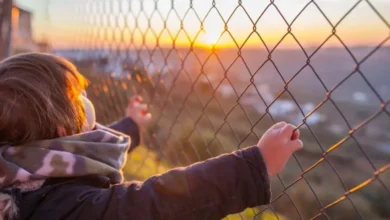Danger to children outside Ukraine: 7-year-old Nastya, who was being treated for cancer, died during an attack in Israel

Ukrainian children were forced to leave the territory of Ukraine after the start of a full-scale war. Some of them left with their families as refugees. Others — because of the need to receive medical care, which they cannot provide during the war in Ukraine. Diseases that require complex and long-term treatment, including oncological pathologies, force parents to look for clinics abroad that have the necessary equipment, specialists and medicines. But even in these seemingly safe countries, children remain vulnerable. This is evidenced by specific cases, in particular the death of a 7-year-old Ukrainian girl in Israel as a result of a rocket attack.
In the city of Bat Yam, located near Tel Aviv, on June 15, 2025, an Iranian missile hit a residential building. Among the dead was 7-year-old Nastya Buryk from Odesa. The girl was in Israel for treatment after a recurrence of cancer. Along with Nastya, her mother Maria, grandmother Olena, as well as two cousins — Kostyantyn and Ilya — died. The family lived in a house that was in the affected area.
Nastia was diagnosed with acute lymphoblastic leukemia in August 2022. The girl was five years old then. Treatment in Ukraine began, but after a relapse in 2023, the question arose about finding alternatives abroad. The Israeli clinic “Ichilov” in Tel Aviv agreed to take the girl for treatment. According to the mother, an individual protocol was developed in this clinic, in which specialists from Israel, Europe and the USA participated. In January 2025, Nastya’s mother wrote about the course of treatment on her Facebook page, emphasizing that this is the only chance for the child.
During the rocket attack on June 15, the girl was at home with her relatives. The rocket hit the building where the family lived. The lives of none of those present could not be saved. The child’s death was confirmed at the medical facility where she was being treated. The Embassy of Ukraine in Israel reported on attempts to organize the transportation of the bodies of the dead to Odesa, but noted that due to the overcast sky in the country, this is currently difficult.
Nastya’s father, Artem Buryk, has been serving in the Armed Forces of Ukraine since 2022. While the child and his family escaped abroad, he remained the only living relative.
This case demonstrates that even a child’s stay outside of Ukraine does not guarantee safety. Nastya did not die from an illness, but as a result of a missile strike. At the same time, she was in a country that has one of the most developed health care systems, a powerful army and an effective threat prevention system. But none of these systems worked when the rocket hit the residential building.
A broader problem also needs attention: the lack of a general international mechanism for the protection of Ukrainian children who are abroad. Some of them have the status of refugees, others have come for treatment or temporary stay. In most cases, they do not have citizenship or the right to permanent residence in the host country, and therefore remain in a legally vulnerable position. Children undergoing treatment do not live in institutions, but with relatives in rented accommodation, often without constant supervision by social services.
Israel is not the only country where Ukrainian children are in the danger zone. France, Germany, Belgium, Spain, Turkey, the USA, Italy — in each of these countries, situations were recorded when Ukrainian children faced psychological violence, cases of domestic risk, denial of access to medical care, discrimination, or linguistic isolation. Some of the cases mentioned suicides, complications of chronic diseases, accidents that happened in children’s dormitories, shelters or during transportation.
Currently, there is no centralized record of these cases. Each incident is covered point by point. There is no single state body that would be responsible for the safety, support and monitoring of the condition of Ukrainian children who are undergoing long-term treatment abroad or who have left unaccompanied by full families.
This case proves that systemic assistance for children abroad must include basic conditions of residential security, risk awareness, legal support and adaptation to the conditions of a country that may itself be in a threat zone. Currently, such conditions do not exist even in states with a high level of defense readiness. As a result, the families who left to save the child become hostages of new dangers.





